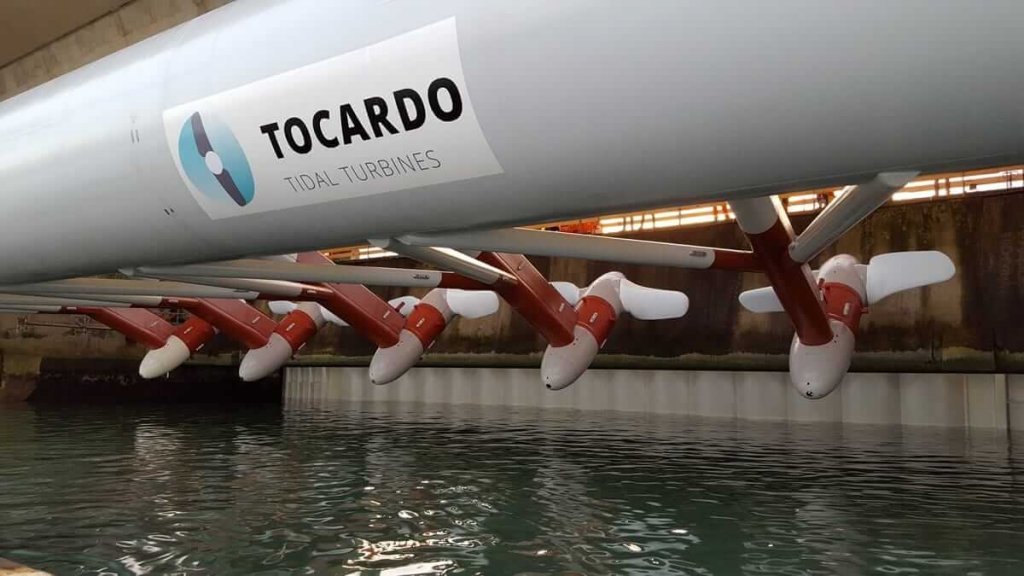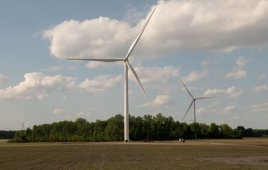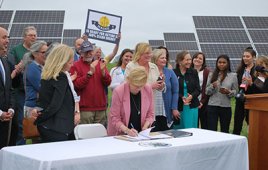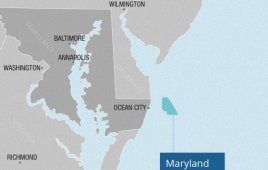In early 1953, high tides and a major storm caused the North Sea to flood. The Netherlands, Belgium, and even parts of England and Scotland were affected. Recovery efforts eventually included the construction of an impressive nine-kilometerlong dam to prevent future flooding in the region.
Oosterscheldekering, or the Eastern Scheldt storm-surge barrier stands as the largest of the world-renowned Delta Works series of dams and storm barriers. It was initially designed as a closed dam but, after much debate, massive gate-like doors were installed in the last four kilometers of the barrier to let fish and sea life pass through much as before. When necessary, such as in the case of severe weather, these gates can close to prevent water from overflowing or surging on land.
Today, the Eastern Scheldt is doing more than giving sea life visitation privileges and protecting the Netherlands from potential flooding threats of the North Sea. The fast-flowing waters of the Eastern Scheldt estuary are proving an ideal source of clean tidal energy. As of late September of this year, five tidal turbines have been installed in the barrier, representing the largest tidal energy project in the Netherlands and the largest tidal array in the world.
“With our turbines in the Eastern Scheldt storm-surge barrier, we can now show the world what tidal energy is all about: providing a clean and reliable source of energy that could fulfill 10 to 20% of the world’s electricity needs,” said Tocardo Tidal Turbines’ CEO Hans van Breugel in a recent press release on the project.
Tocardo designed and produced the free-flow water turbines for the dam. The array of five turbines has a total capacity of 1.2 MW. Beyond making a global clean-energy mark, the five-turbine array is also expected to provide a significant source of Dutch export business, with a potential worldwide generation of more than 200 GW.

The array of five Tocardo Tidal turbines is rated for 1,200 kW. The units operate with water flow in either direction.
This is good news considering construction of the project was no easy feat and did not come cheap at a reported $12.4 million. But Tocardo and the designer, builder, and financial supporter of the turbine’s suspension structure, Huisman, didn’t miss a beat. Together, the two companies along with a host of Dutch businesses completed the project in a record time of nine months.
Before installation, the pre-engineered 50-meter long and 20-meter wide tidal structure had to be transported over water to the work island of Neeltje Jans. Using the slides of the storm-surge barrier, the tidal-power plant was placed on a floating pontoon with makeshift lifters installed between the pillars and under the surge barrier. Weather, water levels, and the ebb and flow of the tides each required continual monitoring to ensure safety. Once weather conditions proved just right, engineers had an installation window of just two hours to carefully mount and connect the tidal power plant.
“This project marks an important step in the development of tidal energy,” said van Breugel, who noted that Tocardo has plans to eventually increase the number of turbines on the site. The project was the result of many efforts, which included funding from the European Regional Development Fund, the Dutch government, and the province of Zeeland as part of the Operational Program for Zuid-Nederland. The province of Zeeland, surrounded by water, provided significant expertise. “The knowledge that we’re building here can be used in other delta regions across the globe,” said provincial representative Ben de Reu. “Tidal energy is the future…of that I am convinced.”
For a digital copy of the entire October issue of Windpower Engineering & Development, click here.
Filed Under: Uncategorized





